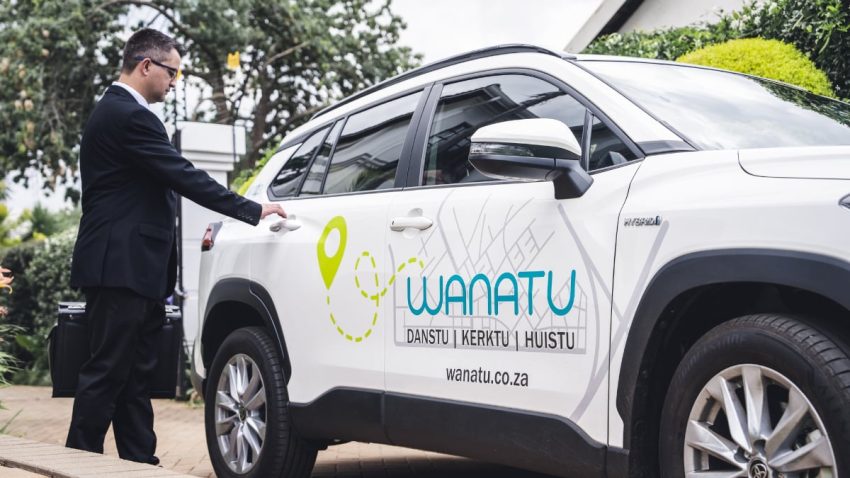E-hailing service Wanatu has gained prominence in the South African market, given its unique service offerings compared to other competitors in the industry.
The service most recently added long-distance trips to its product offering, allowing users to order rides to locations outside of its operating zone.
Other features include Afrikaans-speaking drivers and added in-ride security that has helped appeal to many customers disillusioned with services like Uber and Bolt.
The company debuted in Pretoria and Centurion in October 2024 after a months-long driver recruitment and training process.
By early December 2024, it had already recorded over 10,000 registrations, which had grown to 30,000 by 21 January 2025.
It functions similarly to Bolt and Uber: users request a ride from one destination to another using a mobile app.
However, its business model vastly differs from that of its major competitors. Wanatu owns all its vehicles, and its drivers are employees of the company.
Wanatu’s fleet consists of around 50 Toyota Corolla Cross hybrids, each with a dashcam, an inward-facing camera, a GPS tracking device, and a two-way radio system.
The service focuses on driver and rider safety, and each car has a panic button linked to an armed response service.
Wanatu drivers also get a hand radio for communicating with the control room or private security companies when it is faster or cellular reception is lacking.
Another safety feature implemented into the service is a function that allows for primary and secondary users of the app.
For example, this would enable a parent to become a primary user and access the secondary users’ whereabouts, say their child or other dependent, when on a trip.
In contrast to Wanatu, Uber and Bolt drivers are independent contractors rather than full-time employees.
The independent-contractor relationship between platform and driver has been the subject of major controversy in South Africa and other countries, such as the US.
Wanatu last reported that it employs 85 drivers, all of whom speak Afrikaans. However, the service is also available in English.
It also allows customers to select a specific driver for a trip, should they become particularly comfortable or want to support one in particular.
How the price compares

As one would expect, based on Wanatu’s business model, affordability is not a primary value proposition to its customers.
Not only does it have a limited number of cars, reducing the supply of trips, but they are also fitted with safety equipment and communication, which increases operating expenses.
A recent MyBroadband comparison found that Wanatu’s pricing tends to be slightly more affordable than Uber’s premium Black offering and a little more expensive than Bolt’s Business tier over a 10km trip.
Over longer distances, Wanatu becomes the most expensive option. It is also worth noting that if the driver is more than 10km from the user’s location, a R50 surcharge is applied to cover the additional cost.
However, one pricing benefit users can enjoy is that they won’t be charged more than their trip’s initial estimate.
For instance, Uber and Bolt use algorithms to determine whether an invoiced or reserved fare is correct, considering the length of a trip and the distance covered.
This makes sense considering the additional fuel drivers could consume in traffic or on alternative routes, and the time they lose that could have gone towards other trips.
However, drivers who deliberately drive slowly or take detours to reach the user’s destination could also abuse these mechanisms.
Wanatu CEO Judith van der Walt recently told MyBroadband the service took a different approach than the two major incumbents.
“Our trip fares are determined by the time of day, but the fare the rider initially accepts remains in place,” Van der Walt said. “We do not use a traffic or demand algorithm.”






